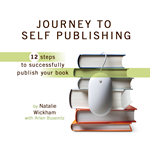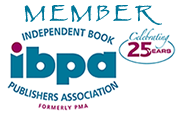| |
Jul 21
Some time ago I subscribed to the Biblioscribe blog, however I just finally got around to perusing the site in greater detail. I was thrilled to see that you can sign up for a free membership and submit press releases, articles, and other promotional information that can be included on their website and made available through their databases. And, of course, I was kicking myself for not discovering this sooner! You can check out the profile I set up a few minutes ago. I also submitted a press release and article. We’ll see what happens with it!
One of the ways that I determine whether to take the time to register and submit information with different sites is based on their Alexa rank. Do you have the Alexa toolbar installed on your browser? If not, you definitely should! Here’s a helpful post about what the Alexa rank means. If you read the article, you’ll see that an Alexa rank is not a perfect measurement of website traffic, but I find that it does give me a general idea of the traffic level of the various sites I visit, especially when those sites are likely to attract the same demographic.
So, here’s how I make a quick decision based on Alexa rank. I click over to Biblioscribe and notice that it has an Alexa rank under 1,000,000. Seems like a worthwhile investment of several minutes to register and upload my info to their site. A little while later, I come across another site that has an Alexa rank above 30,000,000. Maybe not such a good use of my time right now, so I close the tab and move on. There are exceptions to this, of course, but right now with time at a premium and the potential for overload at a high, I have to set up boundaries for myself so that I can “budget” my time wisely. And this is one way that is working well right now.
Jul 20
As you all know from my last post, I was practically drowning in the murky waters of marketing. Things are looking better now. Why, you ask? I did what any normal, dedicated, intelligent person would do…I buried all the books on marketing that are currently on loan from the library, closed all the marketing-related tabs on my browser, shut down my computer, and took a day off. I love Sundays! On top of that, I was particularly encouraged by some things the Lord laid on my heart as I read my Bible and spent time resting.
Now that I’m feeling more refreshed and have a better sense of direction, I thought I would direct your attention to this Creating a Marketing Roadmap that I came across. This was helpful and encouraging, particularly because I’ve already done most of what is recommended (be prepared for a surprising number of typos, though!). However, it provides a good structure for keeping all these various marketing ideas and initiatives organized. And for an author or self-publisher just launching into the marketing aspect of things, this step-by-step list might help preserve some sanity. :-0
Jul 16
This week has been full of marketing-related work for my book, Pajama School – stories from the life of a homeschool graduate. Much of it is just on the thinking and planning and making contacts level, but I’m realizing that in order to be effective I am going to have to keep branching out – way out! – of my comfort zone. Ever the optimist, somehow I think I subconsciously embraced the notion that my books would pretty much sell themselves once they were on the market. Haha. Hahahaha.
Marketing is such a nice word. I think whoever coined it did so to gloss over the not-so-nice connotation of the word, “selling.” But in reality, I’ve realized that “selling” is exactly what I have to be good at in order to sell these books. (imagine that…) The bad news? I really, really, really don’t like selling. And I’m not very good at it (which is probably why I still have a couple thousand books sitting in our garage!).
Anyway…all that was the lead-in to say that I came across a very brief post that nicely summarizes this whole world of book publishing – be it traditional publishing, vanity press publishing, or self-publishing. Any writer would do well to carefully read and process the statistics and advice offered in it, especially noting the concluding paragraph:
“And so, if you are about to embark on a new manuscript, educate yourself thoroughly about the industry, its scams, and potential pitfalls. And more importantly, learn to market yourself well, for this, more than any other skill, is the determining factor in your success or failure.”
In my opinion, this marketing business is the hardest aspect of any of the book project thus far. I suppose for the naturally gifted salesperson this would not be the case (and if that happens to describe you, will you please call me? 🙂 ). It’s a LOT of work, with little results to show for it…at least not yet. But the repeated reminder from Proverbs is that labor – of the persevering, daily variety – is what eventually ushers in the harvest.
Jul 12
All of my research indicated that one of the biggest drawbacks to self-publishing is lack of access to distribution channels. I’m not totally convinced that this is true…yet. I think marketing on a small non-existent budget could at least tie for that designation. However, while I have experienced pretty favorable reception as an independent publishing company, it is a LOT of work! I have been in touch with several distributors who are interested in carrying my book, Pajama School – stories from the life of a homeschool graduate, but I haven’t decided for sure yet what route I’m going to take. As in most things, there are certain advantages and disadvantages to working with a distributor.
One of the things that was still a little fuzzy in my mind was the difference between a distributor and a wholesaler. This article, Understanding the Distribution Channels, was incredibly helpful in sorting out the differences. One of the major advantages to having a distributor is that they handle some of the supply-side marketing. (This is in contrast to marketing to the consumer. The distributor works with bookstores and wholesalers to convince them to stock your book.) Not to mention that some bookstores and wholesalers will only purchase books through a distributor.
At this point, I don’t see any way to get my book listed with Ingram if I don’t use a distributor. As far as I can tell, Borders also only works through a distributor. I am in the process of getting it listed with Baker and Taylor, though, and am in the final stages of establishing an account with Barnes and Noble. And of course, Pajama School has been listed with Amazon.com since prior to its official release. Other than that, I have a number of local stores and libraries carrying it, but I still have a lot of work to do as far as contacting other independent bookstores outside the local area.
It’s really kind of mind-numbing trying to keep track of everything that needs to be done and then following up after initial contacts have been made. This is an area that I have really neglected. Once I check something off my to-do list, I tend to just move forward and forget what’s been done or what follow-up might be required. Definitely a glitch in my system…except for that my system right now is more of a non-system – more like chaotic randomness, perhaps. I keep telling myself that I need to do a better job of organizing all of these different facets of the wonderful world of self-publishing, but for the moment my brain is trapped in the world of distribution…
Jul 06
One of the links on the Self Published Carnival led me to this wonderful list of Seven Tips to a Successful Author Book Signing and Writing Event by The Bauu Institute and Press:
- Research Your Potential Book Signing and Writing Event Locations…
- Be Professional In Requesting An Event…
- Help Drive Attendance And Thereby Book Sales…
- Create An Interesting Presentation Or Performance…
- Remember The Details Of Selling Books…
- Tie In Callback Or Side Opportunities…
- After Event follow up…
Read the article for an ellaboration of each of these points. You’ll come away with all sorts of excellent tips on holding a book signing! I’m still hoping to do a couple of local book signing events, so I’ll definitely be referring back to this article for reminders on what to do and what not to do.
Jul 03
For the past three months, Bryce Beattie, of the StoryHack blog, has been compiling and posting The Self Published Carnival. I’ve been a bit delinquent (as if you all didn’t already know that), so I just finally got around to looking over them in greater detail. They are fabulous! From writing to editing to marketing and more, the links on these carnivals are a treasure trove of helpful tips and tools for the self-publisher:
The Self Published Carnival #1
The Self Published Carnival #2
The Self Published Carnival #3
Jul 02
One of the magazines I started getting automatically once I registered my publishing business/book is Book Business. In their current issue, I was especially interested in the following statistics under the heading “Who is Reading Books?” in one of the articles. Here is what they reported:
- The average age of today’s book reader is 44, but 50 is the average age of the most frequent book buyer.
- 58 percent of readers are women; 42 percent are men.
- Women purchase 65 percent of books.
- 50 percent of Americans ages 13 and older bought a book last year.
- 41 percent of all books purchased are by buyers earning less than $35,000/year.
- $10.08 is the average price paid for a book last year.
- 31 percent of in-store or online purchases are impulse buys.
(Statistics presented by Kelly Gallagher, general manager, Business Intelligence, for R.R. Bowker and chair of BISG’s research committee.)
copyright 2008-2025 Natalie Wickham . original site theme by Natty WP
|
|







Recent Comments